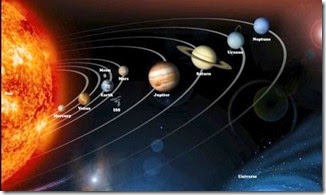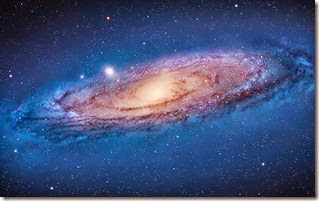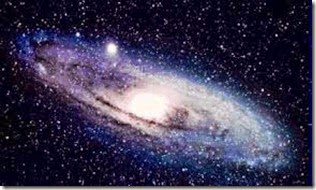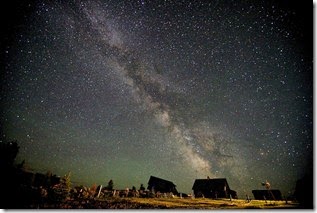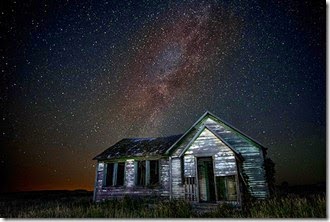Tuesday 19 May 2015
Solar System
The solar system is made up of the Sun, the 8 planets and 5 dwarf planets and their 176 known moons,asteroids, comets, dust and gas. The planets, asteroids, and comets travel around the Sun. Sun is the centre of our solar system. Most of the bodies in the solar system travel around the Sun along nearly circular(elliptical) paths or orbits, and all the planets travel about the Sun in the anticlockwise direction.
The Solar system is located in the Milky Way Galaxy.
Formation of Solar System
The formation of the Solar System began 4.6 billion years ago with the gravitational collapse of a small part of a giant molecular cloud. Most of the collapsing mass collected in the centre, forming the Sun, while the rest flattened into a proto planetary disk out of which the planets, moons, asteroids, and other small Solar System bodies formed.
This widely accepted model, known as the nebular hypothesis, was first developed in the 18th century by Emanuel Swedenborg,Immanuel Kant, and Pierre-Simon Laplace. Its subsequent development has a variety of scientific disciplines including astronomy, physics, geology, and planetary science. Since the dawn of the space age in the 1950s and the discovery of extra solar planets in the 1990s, the model has been both challenged and refined to account for new observations.
Scientists believe that the solar system was formed when a cloud of gas and dust in space was disturbed, maybe by the explosion of a nearby star (called a supernova). This explosion made waves in space which squeezed the cloud of gas and dust. Squeezing made the cloud start to collapse, as gravity pulled the gas and dust together, forming a solar nebula. Just like a dancer that spins faster as she pulls in her arms, the cloud began to spin as it collapsed. Eventually, the cloud grew hotter and denser in the center, with a disk of gas and dust surrounding it that was hot in the center but cool at the edges. As the disk got thinner and thinner, particles began to stick together and form clumps. Some clumps got bigger, as particles and small clumps stuck to them, eventually forming planets or moons . Near the center of the cloud, where planets like Earth formed, only rocky material could stand the great heat. Icy matter settled in the outer regions of the disk along with rocky material, where the giant planets like Jupiter formed. As the cloud continued to fall in, the center eventually got so hot that it became a star, the Sun, and blew most of the gas and dust of the new solar system with a strong stellar wind. By studying meteorites, which are thought to be left over from this early phase of the solar system, scientists have found that the solar system is about 4600 million years old!
Formation of planets
The various planets are thought to have formed from the solar nebula, the disc-shaped cloud of gas and dust left over from the Sun's formation. The currently accepted method by which the planets formed is accretion, in which the planets began as dust grains in orbit around the central proto star. Through direct contact, these grains formed into clumps up to 200 metres in diameter, which in turn collided to form larger bodies (planetesimals) of ~10 kilometres (km) in size.These gradually increased through further collisions, growing at the rate of centimetres per year over the course of the next few million years.
The inner Solar System, the region of the Solar System inside 4 AU, was too warm for volatile molecules like water and methane to condense, so the planetesimals that formed there could only form from compounds with high melting points, such as metals (like iron, nickel, and aluminium) and rocky silicates. These rocky bodies would become the terrestrial planets(Mercury, Venus, Earth, and Mars). These compounds are quite rare in the Universe, comprising only 0.6% of the mass of the nebula, so the terrestrial planets could not grow very large.The terrestrial embryos grew to about 0.05 Earth masses (M⊕) and ceased accumulating matter about 100,000 years after the formation of the Sun; subsequent collisions and mergers between these planet-sized bodies allowed terrestrial planets to grow to their present sizes.
When the terrestrial planets were forming, they remained immersed in a disk of gas and dust. The gas was partially supported by pressure and so did not orbit the Sun as rapidly as the planets. The resulting drag caused a transfer of angular momentum, and as a result the planets gradually migrated to new orbits. Models show that density and temperature variations in the disk governed this rate of migration, but the net trend was for the inner planets to migrate inward as the disk dissipated, leaving the planets in their current orbits.
The giant planets (Jupiter, Saturn, Uranus, and Neptune) formed further out, beyond the frost line, the point between the orbits of Mars and Jupiter where the material is cool enough for volatile icy compounds to remain solid. The ices that formed the Jovian planets were more abundant than the metals and silicates that formed the terrestrial planets, allowing the giant planets to grow massive enough to capture hydrogen and helium, the lightest and most abundant elements.Planetesimals beyond the frost line accumulated up to 4 M⊕ within about 3 million years.Today, the four giant planets comprise just under 99% of all the mass orbiting the Sun.
Theorists believe it is no accident that Jupiter lies just beyond the frost line. Because the frost line accumulated large amounts of water via evaporation from in falling icy material, it created a region of lower pressure that increased the speed of orbiting dust particles and halted their motion toward the Sun. In effect, the frost line acted as a barrier that caused material to accumulate rapidly at ~5 AU from the Sun. This excess material coalesced into a large embryo (or core) on the order of 10 M⊕, which began to accumulate an envelope via accretion of gas from the surrounding disc at an ever increasing rate.Once the envelope mass became about equal to the solid core mass, growth proceeded very rapidly, reaching about 150 Earth masses ~105 years thereafter and finally topping out at 318 M⊕.Saturn may owe its substantially lower mass simply to having formed a few million years after Jupiter, when there was less gas available to consume.
Taurus stars like the young Sun have far stronger stellar winds than more stable, older stars. Uranus and Neptune are thought to have formed after Jupiter and Saturn did, when the strong solar wind had blown away much of the disc material. As a result, the planets accumulated little hydrogen and helium—not more than 1 M⊕ each. Uranus and Neptune are sometimes referred to as failed cores.The main problem with formation theories for these planets is the timescale of their formation. At the current locations it would have taken a hundred million years for their cores to accrete. This means that Uranus and Neptune probably formed closer to the Sun—near or even between Jupiter and Saturn—and later migrated outward (see Planetary migration below). Motion in the planetesimal era was not all inward toward the Sun; the Stardust sample return from Comet Wild 2 has suggested that materials from the early formation of the Solar System migrated from the warmer inner Solar System to the region of the Kuiper belt.
After between three and ten million years,the young Sun's solar wind would have cleared away all the gas and dust in the proto planetary disc, blowing it into interstellar space, thus ending the growth of the planets.
A Video for children
Monday 18 May 2015
WHAT IS A GALAXY
The galaxies are known to be the cities of stars. The galaxy is collection of planets,family of planets(due to gravitational attraction of large star many planets are revolving around that star ex: Solar System), stars ,asteroids,meteorites,supernova,black holes etc.…
How the galaxies are formed?
The formation of galaxies are described by two theories (these two theories only described how the first galaxy formed)
1.Galaxies were born when vast clouds of gas and dust collapsed under their own gravitational pull,allowing stars to form.
2.The other, which has gained strength in recent years, say the young universe contained many small “lumps” of matter, which clumped together to form galaxies.
types of galaxies
There are three main types of galaxies
1.Elliptical
2.Spiral
3.Irregular
Elliptical Galaxy
An elliptical galaxy is a type of galaxy having an approximately ellipsoidal shape and a smooth, nearly featureless brightness profile. Unlike flat spiral galaxies with organization and structure, they are more three-dimensional, without much structure, and their stars are in somewhat random orbits around the center.
Spiral Galaxy
A spiral galaxy is a certain kind of galaxy originally described by Edwin Hubble in his 1936 work The Realm of the Nebulae and, as such, forms part of the Hubble sequence. Spiral galaxies consist of a flat, rotating disc containing stars, gas and dust, and a central concentration of stars known as the bulge.
milky way galaxy
Milky way galaxy is our home galaxy in which our solar system exists.
The Milky Way has a very distinctive geometry: a rotating disk embedded in a spherical halo. The disk and halo populations also differ in heavy element abundance, in ages of the stars, and in the orbits of the stars. This geometry, and age and metallic city distribution are just a few of the clues that tell us how the Milky Way formed.
The story of our galaxy began 12 to 13 billion years ago. Roughly 500,000 years after the Big Bang, slight in homogeneities in the density of the universe began to collapse into structures at all scales. The dark matter that would form the halos of galaxies and galaxy clusters likely collapsed first, and its gravity gave order to the regular matter. In most cases, these collapsing pockets of material fragmented into small galaxies similar perhaps to today's irregular galaxies. Over time, gravity pulled some of these small galaxies together, building larger and larger systems like our own. This aggregation of smaller galaxies was an important process in building the galaxies we see today. (However, some galaxies seem to have collapsed much of their matter quickly during the early Universe).
To get our Milky Way's disk-like structure, large amounts of gas needed to be present at all times, and the gas has to remain relatively cold and keep a consistent rotation. We know observationally that when two smaller spiral galaxies collide it is possible to get one larger spiral out of the collision if the initial conditions are right. This slow build up in mass through merger explains many of the more unusual characteristics of our galaxy. Most immediately, the constant influx of new gas and dust with in-falling systems explains how star formation has not yet consumed all the Milky Way's raw materials. It also explains the variety of ages of the globular clusters and the "backwards" orbit of many of the systems. Some of these dense collections of stars likely formed in the halos of smaller galaxies at different points in the universe's history, and when our Milky Way cannibalized these galaxies, the globular clusters joined our halo, keeping their initial orbital direction, and bringing with them a variety of ages.
Angular Momentum is responsible for our galaxy's overall disk-like shape. While this disk possesses both a spherical nucleus and spherical surrounding halo, the disk contains the bulk of the gas and dust, and this material, like a ball of pizza dough thrown into the air and set rotating, flattens out as it spins.
Images for milky way galaxy
Tuesday 5 May 2015
THE UNIVERSE
Hai guys this is the first information i am posting in this million information’s blog.
Around us there are several things and information’s exists and it is infinite to learn. There is always starting and ending of something. Regarding my blog million information’s THE UNIVERSE is the starting information i am going to tell .Because we are living in this world which is considered to be a small dust in this vast infinite UNIVERSE. So let us know something about this universe and let we try to understand the mystery in it.
The UNIVERSE is a vast and vast infinite expanding one. Nobody even great scientists could not find out the beginning of this UNIVERSE. But they have proposed some theories that relatively explains how the universe could formed. The Big Bang theory is the most accepted theory on the beginning of the universe.
All right don’t think too much we just try to understand the concepts proposed by the scientists.
Lets go guys.....
2 theories believed by scientists that universe exists
50 years ago Scientists thought universe had always existed based on 2 theories
1.Steady Theory and
2.Pulsating Theory
The Steady Theory states that the continual creation of matter at the centre of an expanding universe so the universe appears the same for all times.
The Pulsating theory states that the universe goes through regular cycles of expansion and contraction for all time.
But now that the scientists have proven that the universe began about 14billion years ago with the big bang[1billion=100crores 14billion=1,40,00,00,000 crore]
IN THE BEGINNING
In the beginning, all the matter, energy, space & time which we can observe were apparently created in an instant.
This was not like an explosion into empty space, but expansion of space itself.
[The Scientists till now do not know that the secrets of universe, they cannot say that the universe began only due to big bang but they have just proved some possibilities of beginning of universe due to big bang]
In the First Second...
In the first fraction of second, when the current laws of physics did not apply, a lot happened.
Within a small fraction of a nano second, the universe expanded at an enormous rate from a very small size. This is known as inflation and was necessary to allow the universe to be relatively homogeneous(i.e everywhere you look, it is much the same)
Particles began to form out of enormous energy – first small particles like quarks, gluons & leptons, later the more familiar protons, neutrons & electrons.
The four fundamental forces or interactions like gravity, electromagnetism, the strong nuclear force and the weak nuclear force developed gradually(because scientists believe that these forces are actually caused by an exchange of very small particles(bosons)).
By the time universe was 1 second old it had expanded to a size about a thousand times size of the solar system and the temperature dropped to 10000 million degrees.
The first few minutes, As the age of the universe moved beyond seconds to minutes and it grew in size to about 1015 km across.
Nuclear fusion formed the first of the nuclei,(Hydrogen and helium) The universe was still incredibly hot.
Universe is expanding...
After several hundred thousand years conditions had established enough for the atoms to form, after several hundred million years, the first stars and later the first galaxies, began to form by gravitational attraction.
Supernova stars created many of the heavier elements out of the lighter elements and then exploded them out into the space, making them available for planets which later formed, this allowing the complexity of chemistry on earth necessary for life.
The universe is still expanding...
UNIVERSE IS EXPANDING A DEMO VIDEO
BIG BANG
Logically there are 3 possibilities for the cause of the big bang
1. Something caused it to begin(that something may be god named by the people)
2. Nothing caused it but it began anyway or
3. The Universe never began because it has always existed(Steady state)
Big Bang Expansion
